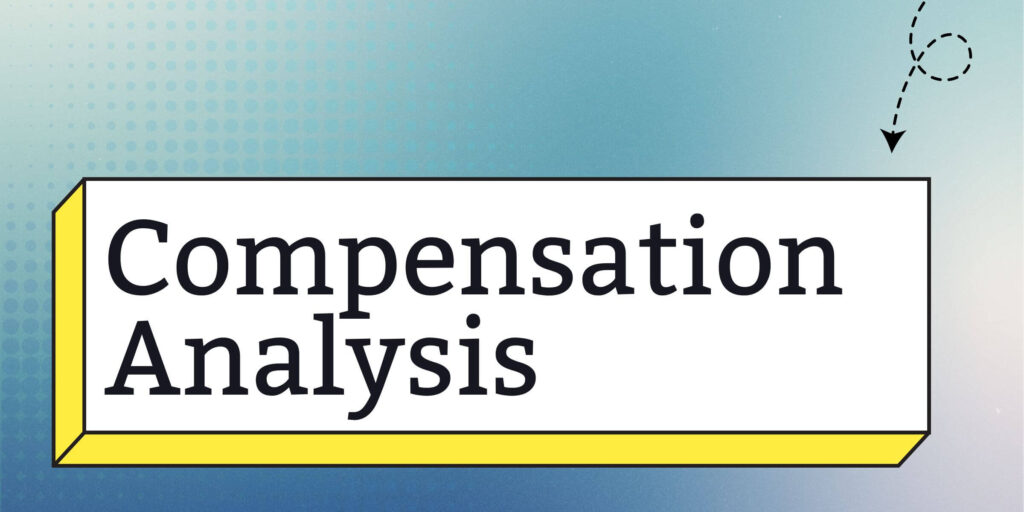Imagine a world where your sales team is equipped with the knowledge, tools, and resources to win deals consistently and effectively.
Sales enablement is the strategic approach to achieving this outcome, transforming the way your organization engages buyers and drives revenue growth.
Key Takeaways
- What is sales enablement? Sales enablement is an ongoing process that provides sales teams with the resources, content, and training to engage buyers.
- Modern businesses can benefit significantly from the implementation of sales enablement practices, resulting in improved performance and increased revenue growth.
- A successful strategy relies on comprehensive training and development for reps, efficient content delivery and management, robust analytics and performance measurement tools.
Defining Sales Enablement in Today’s Market
Sales enablement is an ongoing process that equips sales teams with the necessary tools, content, and training to effectively engage buyers throughout the entire sales cycle.
As the sales landscape has evolved, so has the definition of sales enablement. Multiple perspectives, such as those from Forrester and Gartner emphasize the significance of aligning sales reps with customer stakeholders, integrating activities and systems, and enhancing sales results and productivity.
The sales enablement process typically progresses through several stages, moving from reactive support to a fully optimized solution.
This evolution reflects the shift from traditional to contemporary sales enablement technology, often necessary as a company’s sales enablement needs increase.
Sales managers have a significant part in guiding their teams through these stages, ensuring the successful deployment of sales enablement strategies.
The Significance of Sales Enablement for Modern Businesses
Sales enablement is essential for modern businesses as it offers numerous advantages, making sales enablement important for reasons such as:
- Synchronizing sales and marketing teams
- Optimizing sales productivity
- Expediting deal closure
- Reinforcing company image
When implemented effectively, sales enablement can lead to accelerated deals, increased sales efficiency, and improved corporate reputation.
To fully utilize sales enablement, businesses must adopt key best practices, such as:
- Strategic alignment
- Comprehension of the sales enablement playbook
- Execution of the sales enablement process
- Tailored communication
These practices ensure that sales enablement initiatives are well-targeted, resulting in significant improvements in sales performance and revenue growth.
Core Components of an Effective Sales Enablement Strategy
An effective sales enablement strategy comprises three core components: comprehensive training and development for sales reps, efficient content delivery and management, and robust analytics and performance measurement.
Each of these components has a key role in ensuring that sales teams have the necessary resources to engage buyers and effectively close deals.
Training and Development for Sales Reps
Training and development programs for sales representatives are crucial for gaining the needed skills and knowledge to excel in their roles and adjust to fluctuating market conditions. Comprehensive training includes:
- Onboarding
- Certification
- Coaching
- Sales communication
- Sales material assets
- Measuring and optimizing sales performance results
Sales readiness ensures that sales reps possess the understanding and capabilities to optimize every client engagement.
Some examples of tools used to monitor individual reps and coaching conversations, identifying the most productive and efficient coaching methods, include:
- Sales coaching assessments
- Role-playing scenarios
- Training videos
- Call or email scripts
These tools help to ensure that sales reps are well-prepared and equipped to succeed in their client interactions.
Content Delivery and Management
Content delivery and management are key to providing sales teams with the resources they need to sell effectively.
It assists in recognizing key moments in the buyer’s journey and furnishing personalized content to reach the consumer at the appropriate time.
Sales enablement collateral, such as content developed to facilitate the training of sales representatives, enables salespeople to effectively present a company’s value proposition to the buyer and provides educational content for the sales team.
Analytics and Performance Measurement
Strong analytics and performance measurement are necessary for sustaining the effectiveness of sales enablement solutions.
By tracking individual and team performance, sales enablement leaders can identify areas for improvement and take action to address them.
Utilizing technology to assess sales performance and analytics offers numerous benefits, including:
- Improved sales strategies
- Efficient data collection and examination
- Valuable insights for all business areas
- Increased productivity and efficiency
- Enhanced performance and revenue.
The Sales Enablement Toolkit: Essential Tools for Empowerment
To empower sales teams and drive success, sales enablement relies on a variety of essential tools. These tools include:
- Customer relationship management (CRM) systems
- Sales intelligence platforms
- Content management solutions
- Analytics tools
Each of these tools has a significant role in the sales enablement process:
- CRM systems help manage and analyze customer interactions
- Sales intelligence platforms provide insights into potential customers
- Content management solutions streamline the organization and delivery of content
- Analytics tools offer data-driven insights to optimize sales performance.
Aligning Sales and Marketing Teams Through Enablement
Sales enablement fosters alignment between sales and marketing teams, ensuring that both departments work together to create and deliver impactful content and messaging. This alignment is key to providing buyers with the right content at the right time, ultimately resulting in more successful sales outcomes.
Synchronizing sales, customer support, and marketing teams creates an efficient organization that offers an improved experience to customers. The collaboration between these teams is facilitated by the implementation of sales enablement tools and strategies, which break down silos and enhance overall productivity.
Orchestrating the Sales Process with Enablement Techniques
Sales enablement techniques help orchestrate the sales process, ensuring that sales reps are equipped with the right resources and guidance at each stage of the buyer’s journey. Popular sales enablement techniques include:
- Crafting a mission for the sales enablement playbook
- Setting objectives and monitoring KPIs
- Emphasizing the significance of sales enablement
- Focusing on customers’ requirements
- Embracing sales technology tools
- Collaborating as a unified team
Through the implementation of these techniques, sales enablement leaders can guarantee that their teams have access to the necessary information without having to search for it, resulting in increased productivity and sales success.
The Role of Technology in Sales Enablement
Technology has a pivotal role in sales enablement, providing the necessary tools and platforms to support sales teams in their efforts to engage buyers and close deals. Sales enablement technology, such as sales enablement software, includes:
- Sales content management tools
- Video coaching and practice platforms
- Sales engagement software
- Sales intelligence tools
- Account-based selling platforms
- Customer relationship management (CRM) systems
- Competitive intelligence automation tools
The benefits of technology for content delivery and management in sales enablement include:
- Improved productivity
- Enhanced content organization
- Personalization and customization
- Analytics and insights
Similarly, leveraging technology to evaluate sales performance and analytics has numerous benefits, such as:
- Improved sales strategies
- Efficient data collection and examination
- Valuable insights for all business areas
- Increased productivity and efficiency
- Enhanced performance and revenue.
Who Takes the Helm? Ownership of Sales Enablement Initiatives
Ownership of sales enablement initiatives can vary across organizations, with potential involvement from sales, marketing, or dedicated sales enablement teams.
Research from CSO Insights indicates that approximately half of sales enablement operations are led by the head of sales, while other organizations may assign the responsibility to executive management, sales operations, or marketing.
Clear understanding of ownership and task distribution is vital for an effective sales enablement solution. No matter who owns it, it’s essential to define precise roles and responsibilities.
Sales enablement leaders must be held accountable for implementing a platform that provides the content management, customer engagement, analytics, and sales training content their organization requires, while sales personnel and marketing teams also have designated responsibilities in ensuring the system’s effectiveness.
Building a Robust Sales Enablement Program
Establishing a strong sales enablement program requires the following steps:
- Align sales goals with company objectives.
- Identify sales team requirements.
- Gain buy-in from stakeholders.
- Develop onboarding and training programs.
- Craft and curate applicable content.
- Implement a technology stack.
- Establish metrics and KPIs to measure effectiveness.
Formulating a clear strategy for a sales enablement program involves:
- Setting goals
- Determining KPIs
- Conveying the significance of sales enablement to stakeholders
- Formulating a mission statement for the playbook
- Identifying and addressing challenges
- Educating and training the sales team
- Securing executive buy-in and support
- Documenting a comprehensive sales enablement plan.
Measuring the Impact: Evaluating Sales Enablement Success
Assessing sales enablement success involves monitoring key performance indicators (KPIs) to measure the effect of enablement initiatives on sales outcomes. Leading indicators for assessing the impact of sales enablement include:
- Emails sent
- Calls made
- Meetings scheduled
- Pipeline generated
Software that tracks leading and lagging indicators, as well as generates correlation reports, can be utilized to measure the effect of sales enablement. KPIs used to evaluate sales enablement success include:
- Lead-to-opportunity conversion rate
- Content performance
- Win rate
- Competitive win rate
- Average selling price
- Time spent selling
- Lead quality
- Training and coaching effectiveness
- Performance, proficiency, productivity
- Length of sales cycle
- Quota attainment
- Calls to action (CTA)
- Sales closing ratio
- Marketing collateral performance
- Deal size
Selecting the Right Sales Enablement Platform
Choosing the right sales enablement platform involves examining vendors and solutions, pinpointing the specific needs of the organization, and selecting a platform that best satisfies those requirements. When evaluating a sales enablement platform, key features to consider include:
- Content management
- Training and coaching
- Communication and collaboration
- Analytics and insights
- AI and automation
Various sales enablement platforms can differ in terms of:
- Features
- Functionality
- User interface
- Integration capabilities
- Analytics and reporting
- Customization options
- Support and training
It is essential to evaluate multiple platforms and take into account your particular business needs prior to making a decision.
Factors such as pricing flexibility, total cost of ownership, return on investment (ROI), scalability, and integration capabilities should also be considered when selecting a sales enablement platform.
Best Practices for Sales Enablement Leadership
Best practices for sales enablement leadership include:
- Cultivating a culture of collaboration
- Establishing clear expectations
- Consistently monitoring and improving sales enablement efforts
- Establishing concrete objectives
- Offering training and mentorship
- Stimulating collaboration and knowledge sharing
- Establishing a culture of constructive feedback
Sales enablement leaders, including the sales enablement manager, should take steps to define roles and responsibilities, set measurable goals, and provide feedback and guidance to ensure expectations are clear.
By leveraging data-driven decision-making and iterating their strategies for improvement, sales enablement leaders can monitor and optimize their efforts, leading to increased productivity and sales success.
The Evolution of Sales Enablement: Trends to Watch
The progression of sales enablement will be influenced by emerging trends, such as:
- The growing importance of personalization
- The expanding role of artificial intelligence (AI)
- The demand for more integration between sales and marketing technologies
These trends reflect the demands of a rapidly changing sales landscape and the need for organizations to adapt their sales enablement strategies accordingly.
Personalization, AI-powered insights, and comprehensive technology solutions are driving the progression of sales enablement, empowering sales teams to be more productive and successful.
As these trends continue to gain traction, sales enablement leaders must stay ahead of the curve, ensuring that their organizations are well-prepared to capitalize on the opportunities these innovations present.
Summary
Sales enablement is a powerful strategic approach that enables organizations to transform their sales processes, align sales and marketing teams, and drive revenue growth.
By implementing a comprehensive sales enablement strategy, investing in the right tools and platforms, and fostering a culture of collaboration and continuous improvement, businesses can unlock their sales potential and achieve lasting success in today’s competitive market.
Frequently Asked Questions
What are the three pillars of sales enablement?
The three pillars of sales enablement are:
- Content: Relevant, accessible materials like sales decks and case studies tailored to the buyer’s journey.
- Training and Coaching: Ongoing education to improve skills, product knowledge, and confidence.
- Technology and Tools: Platforms like CRM and analytics tools to streamline workflows and personalize interactions.
These pillars empower sales teams to close deals and build strong customer relationships.
What is the need for sales enablement?
Sales enablement is essential for empowering sales teams with the tools, resources, and strategies needed to perform effectively.
It streamlines workflows, enhances team skills and improves selling techniques, and ensures consistent messaging to create a unified customer experience.
Additionally, it leverages analytics to track performance and make data-driven decisions, ultimately driving higher productivity, stronger customer relationships, and improved sales outcomes.
What is the benefit of sales enablement?
Sales enablement offers many benefits, including equipping sellers to understand customer profiles, increasing efficiency by integrating data with CRM and DAM systems, providing valuable insights into the sales pipeline and market trends, and helping sales reps hone basic skills to have more valuable conversations in each stage of the sales process.
What is the fundamental purpose of sales enablement?
The fundamental purpose of sales enablement is to facilitate growth by harmonizing personnel, procedures and priorities.







